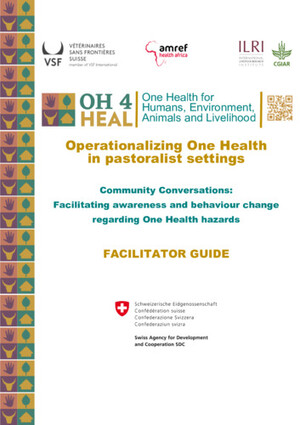
Predicted changes in herd immunity levels against Rift Valley fever virus in livestock following a natural exposure
Abstract
Introduction
Rift Valley fever virus (RVFV) transmission gets elevated following periods of excessive and persistent rainfall. The average inter-epizootic period in Kenya has been estimated to be 3.6 years (range 1–7 years). It is presumed that herd immunity plays an important role in modifying the length of these intervals given that the risk of an epidemic intensifies when herd immunity is low. The objective of this study was to evaluate the relationship between herd immunity and RVFV transmission dynamics.
Materials and methods
We developed a model to simulate RVFV transmission dynamics. The model comprises 2 vectors (Aedes and Culex spp.) and 2-hosts (cattle and sheep). Vector population dynamics are driven by probability functions that use precipitation obtained from Tropical Rainfall Measuring Mission (TRMM). Host related parameters are based on socio-economic data obtained from empirical studies conducted in Ijara, Kenya. Following the predicted outbreak, we prevented further transmissions and run simulations for five years to assess the evolution of herd immunity patterns.
Results and discussion
The model reproduces the 2006/7 RVF outbreak and predicts a high herd immunity level at the end of that outbreak (93% in cattle and 81% in sheep). Five years after the end of the outbreak, the herd immunity levels decline to an average of 5.9% [range 2.5, 7.9%] in cattle and 0.1% [range 0, 0.43%] in sheep. The period predicted by the model closely mirrors the average inter-epizootic period in Kenya. The rate of decline is higher in sheep relative to cattle probably due to the greater population turnover associated with higher fecundity rate, off take, replacement rate and shorter lifespan. Other analyses show that seasonal/inter-annual transmissions boost herd immunity. These inter-annual transmissions might be responsible for sustaining herd immunity over time especially when there are no external shocks associated with droughts, migration and tribal animosities.
Conclusions
This is the first study to utilize a simulation model to demonstrate the impacts of RVF immunity on RVF transmission and it has huge potentials for use in evaluation of cost-effectiveness of vaccination campaigns.
Citation
Gachohi, J. and Bett, B. 2014. Predicted changes in herd immunity levels against Rift Valley fever virus in livestock following a natural exposure. Presented at the third Medical and Veterinary Virus Research Symposium (MVVR-3), Nairobi, Kenya, 17 October 2014. Nairobi, Kenya: ILRI.










